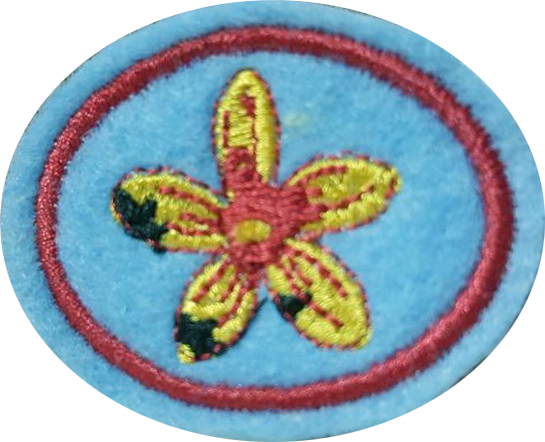Difference between revisions of "AY Honors/Fabric Yo-Yo"
Jomegat bot (talk | contribs) (Convert honor_tab to honor_landing *** existing text overwritten ***) |
DesignerBot (talk | contribs) m (insert nowiki-Tag infront of the honor_landing-Template so there is no paragraph infront of the language selector) |
||
| Line 1: | Line 1: | ||
<translate> | <translate> | ||
| − | {{honor_landing | + | <nowiki/>{{honor_landing |
|honorname=Fabric Yo-Yo | |honorname=Fabric Yo-Yo | ||
|skill=1 | |skill=1 | ||
Revision as of 01:49, 21 January 2021
| Fabric Yo-Yo | |
|---|---|
| Arts, Crafts and Hobbies | |
Skill Level 123 | |
Approval authority South American Division | Year of Introduction 2012 |
See also | |
AY Honors/Fabric Yo-Yo/Overview
The most challenging requirement of this honor is probably this:
6. Make two of the following projects and put into practice the techniques mentioned in requirement 5:
- a. Elastic hair bands
- b. Carpet
- c. Key chain
- d. Refrigerator magnet
- e. Bag
- f. Sandals or slippers
- g. Object of your choice
1. Define what fabric yo-yo is. What is the origin of this technique?
2. What is the main goal of this technique?
3. Explain the stages of this technique.
4. What materials and tools are necessary?
5. Demonstrate and give examples of the following:
- a. Traditional base
- b. Nozzle base
- c. Inverted base
6. Make two of the following projects and put into practice the techniques mentioned in requirement 5:
- a. Elastic hair bands
- b. Carpet
- c. Key chain
- d. Refrigerator magnet
- e. Bag
- f. Sandals or slippers
- g. Object of your choice
1
Fabric yo-yo consists of taking advantage of and recycling the scraps of colorful fabrics used by stylists and seamstresses to create beautiful pieces. The word "fuxico" in Portuguese means "gossip" and this technique comes from when women were supposed to meet and go into "conversations and gossip", and would make these small pieces in the meantime. From cutting, folding and uniting, suddenly these beautiful flowers appeared that could adorn a lapel, a wallet, cushions, hair clips, and many other applications. Most of these works of art consist of small circles of fabrics that are stitched, sewn, and glued together to decorate a surface. Buttons, ribbons, beads, bows and pearls are added as final details.
In English it is known as "fabric yo-yo" and in the 1930s they were very popular and are still used today. They make great accessories for hair, dolls, small animals, etc. which are formed by many rounds of cloth or fabric.
2
3
4
5
5a
5b
5c
6
6a
6b
6c
6d
6e
6f
6g
References
Content on this wiki is generated by people like you, and no one has created a lesson plan for this honor yet. You could do that and make the world a better place.
See AY Honors/Model Lesson Plan if you need ideas for creating one.


